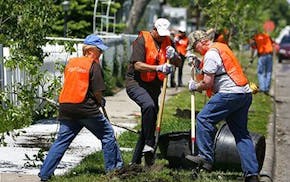The war in Laos (1961-1975) brought the U.S. Central Intelligence Agency and Hmong together as allies when the agency engaged the Hmong to fight the North Vietnamese and the Communist Pathet Lao.
Author Joshua Kurlantzick has written an authoritative account of the conflict and explains how it set the pattern for later CIA covert military actions, such as the first American operations into Afghanistan. In his view, the war in Laos gave the agency an opportunity to expand its role via its new paramilitary arm.
Kurlantzick, who has written extensively about Southeast Asia, backs up his conclusions with recently declassified material and many, many interviews in a clear narrative that very occasionally is overwhelmed by the compact style of a dedicated researcher.
The secret military operation was launched on then-President Dwight Eisenhower's fear that if Laos fell to communism, then all of Southeast Asia would follow — what baby boomers may recall as the Domino Theory. But the initial goal to maintain a democratic, governable Laos changed as the Southeast Asian conflict expanded.
"Many American leaders began to see the operation as less about saving Laos and more as a means to kill and maim North Vietnamese, and thus help the war effort in Vietnam," the author writes.
Kurlantzick organizes the book around four individuals:
• Vang Pao, the Hmong general for whom the author has great regard, while acknowledging when the general's goals exceeded his grasp.
• Two CIA lifers who loathed each other's company, case officer Bill Lair and paramilitary officer Tony Poe. Lair believed in the Hmong as a fighting force and pitched the idea in Washington, D.C., while Poe trained the Hmong and fought beside them.
• U.S. ambassador Bill Sullivan, who took over command as the war grew. Sullivan favored the CIA role but did not care to work with the American military. As the author notes, "Using his influence in the Johnson administration, Sullivan made sure that this colonel, who had four times the wartime experience as Sullivan and the CIA station chief together, could not even reside in Laos." The Army colonel remained in Bangkok.
Kurlantzick also provides a sense of the war's scale ($500 million per year in 1970 dollars) and the extent of the bombing (an attack every eight minutes for almost a decade). "Tens of thousands of lives were lost — Lao, Hmong, Vietnamese, and Thai among them," he notes.
Historians, particularly those who enjoy military history, will find the book compelling, but it is an excellent choice for anyone who wants to more fully understand our government and how its policies evolve.
Becky Welter is a Star Tribune copy editor.
A Great Place to Have a War
By: Joshua Kurlantzick.
Publisher: Simon & Schuster, 323 pages, $28.

Yuen: Why do people forgive? It's messy, complex and 'the best form of self-interest'

Hark, downtown Minneapolis' only vegan, gluten-free cafe, closing April 28

Critics' picks: The 12 best things to do and see in the Twin Cities this week
How the Goo Goo Dolls learned the music biz from Minneapolis bands

